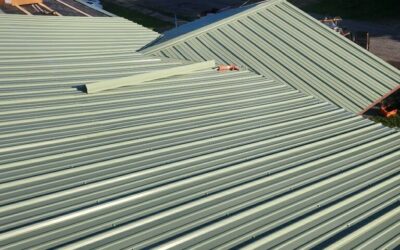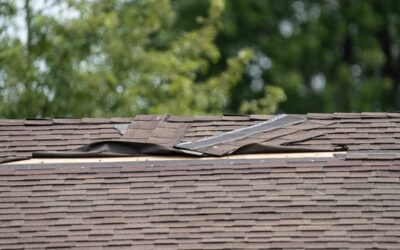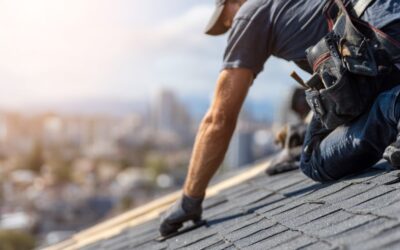What Roof Lasts the Longest? A Complete Guide for Homeowners
When homeowners start thinking about replacing their roof, one of the first questions they often ask is what roof lasts the longest. Since a roof is such a large investment, it’s only natural to want a material that provides durability, reliability, and the best return for your money. With so many options available—ranging from asphalt shingles to metal, tile, slate, and even modern synthetic roofing—it’s important to understand the lifespan of each material and the factors that affect how long your roof will hold up.
This comprehensive guide takes a deep look at the most common roofing materials, compares their lifespans, highlights the maintenance they require, and explains how regional climate and installation quality play just as big a role as the material itself.
Chapter 1: Why Roof Lifespan Matters
Your roof is more than just the top layer of your home. It protects your house from rain, snow, wind, and sun. A failing roof doesn’t just affect appearance; it can compromise the structure, lead to leaks, cause mold growth, and increase energy costs.
Because roof replacement is one of the most expensive home improvement projects, choosing a roof that lasts longer reduces the frequency of replacement, saves money, and provides peace of mind.
Chapter 2: Average Lifespans of Common Roofing Materials
Here’s a quick overview of how long different roofs can last under ideal conditions:
- Asphalt shingles (3-tab): 15–20 years
- Architectural asphalt shingles: 25–30 years
- Metal roofing (steel or aluminum): 40–70 years
- Clay tiles: 50–100 years
- Concrete tiles: 40–75 years
- Slate roofing: 75–200 years
- Wood shingles/shakes: 20–40 years
- Synthetic roofing materials: 30–50 years
While slate is often considered the ultimate winner for longevity, not every home or homeowner is suited for slate because of its weight, cost, and installation requirements.
Chapter 3: Asphalt Shingles – The Most Common but Shorter-Lived Option
3-Tab Asphalt Shingles
- Lifespan: 15–20 years
- Pros: Affordable, easy to install, widely available.
- Cons: Thin material, more prone to wind damage, shorter life expectancy.
Architectural Asphalt Shingles
- Lifespan: 25–30 years
- Pros: Thicker, more durable, better appearance than 3-tab.
- Cons: Still doesn’t match the longevity of premium materials.
Asphalt shingles are popular because of their price point and versatility, but they are not the best choice if you’re looking for a roof that lasts the longest.
Chapter 4: Metal Roofing – A Balance of Longevity and Modern Appeal
Metal roofs have become increasingly popular thanks to their durability, eco-friendliness, and modern style.
- Steel or Aluminum Roofs: Typically last 40–70 years depending on the coating and maintenance.
- Copper Roofing: Can last over 100 years, developing a green patina that actually protects the material.
- Zinc Roofing: Known for lasting 80–100 years with very little maintenance.
Metal roofing offers one of the best balances between cost and lifespan.
Chapter 5: Clay Tile Roofs – A Mediterranean Classic
Clay tile roofs are not only beautiful but incredibly durable.
- Lifespan: 50–100 years
- Advantages: Fire-resistant, eco-friendly, excellent performance in hot climates.
- Disadvantages: Heavy, requiring strong roof framing; expensive upfront; fragile under foot traffic.
Clay tiles perform exceptionally well in regions with hot, dry weather but can be more vulnerable in freezing climates if not properly installed.
Chapter 6: Concrete Tile Roofs – Durable but Heavy
Concrete tiles provide an alternative to clay with a slightly lower cost.
- Lifespan: 40–75 years
- Pros: Strong, weather-resistant, available in many styles.
- Cons: Heavy like clay, requiring reinforced roof structures.
While not as long-lasting as clay, they still outperform most asphalt shingles by decades.
Chapter 7: Slate Roofing – The King of Longevity
When asking what roof lasts the longest, slate almost always tops the list.
- Lifespan: 75–200 years depending on the type of slate.
- Benefits: Fireproof, highly durable, elegant appearance, requires minimal maintenance.
- Drawbacks: Very heavy, extremely expensive, and requires expert installation.
If cost and structural support aren’t an issue, slate is considered the best investment for a roof with unmatched longevity.
Chapter 8: Wood Shingles and Shakes – Natural Beauty with a Moderate Lifespan
Wood shingles and shakes offer a rustic, natural appearance, often used in cottages and historic-style homes.
- Lifespan: 20–40 years
- Pros: Attractive, eco-friendly, good insulation properties.
- Cons: Requires regular maintenance, prone to rot, insect damage, and fire (unless treated).
While not the longest-lasting, wood roofing provides charm and character.
Chapter 9: Synthetic Roofing Materials – A Modern Innovation
Synthetic roofing products are designed to mimic slate, wood, or tile but with lighter weight and lower costs.
- Lifespan: 30–50 years
- Advantages: Lightweight, durable, often recyclable, resistant to cracking and weathering.
- Disadvantages: As a newer product, longevity claims are based on testing rather than centuries of real-world performance.
Synthetic options may be ideal for homeowners who love the look of slate or wood but want easier installation and lower costs.
Chapter 10: Factors That Influence Roof Longevity
The type of material isn’t the only factor in determining how long your roof lasts.
- Climate: Heavy snow, rain, hail, or extreme heat can shorten roof lifespan.
- Installation Quality: Even the best materials will fail prematurely if installed poorly.
- Maintenance: Cleaning gutters, removing debris, and inspecting for damage all extend lifespan.
- Ventilation: Proper attic ventilation prevents heat and moisture buildup.
- Roof Pitch: Steeper slopes shed water faster, reducing the risk of leaks.
Chapter 11: Maintenance Requirements for Long-Lasting Roofs
Asphalt Shingles
- Inspect annually, replace damaged shingles, keep gutters clear.
Metal Roofs
- Rinse periodically to remove debris, check for loose fasteners, repaint if protective coating wears off.
Tile Roofs
- Replace cracked tiles quickly, ensure underlayment is intact, avoid walking on tiles.
Slate Roofs
- Inspect for broken pieces, check flashing, hire professionals for any repairs.
Wood Shakes/Shingles
- Clean moss and debris, apply preservatives, maintain good ventilation.
Chapter 12: Regional Considerations
The best roof for longevity may depend on where you live.
- Hot/Dry Climates: Clay and concrete tiles perform exceptionally well.
- Cold/Freezing Climates: Slate and metal resist snow and ice damage.
- Humid/Rainy Regions: Metal and synthetic roofing offer strong protection against moisture.
- High Wind Zones: Architectural shingles and standing seam metal perform best.
Chapter 13: Cost vs. Longevity
While longer-lasting roofs save money over time, they also require higher upfront investments.
- Asphalt: $5,000–$12,000 for most homes.
- Metal: $15,000–$40,000 depending on type.
- Clay/Concrete Tile: $20,000–$50,000+.
- Slate: $25,000–$100,000+.
When evaluating what roof lasts the longest, weigh both the lifespan and your long-term budget.
Chapter 14: Environmental Impact
Roof lifespan also ties into sustainability. Materials that last longer reduce waste by lowering the frequency of replacement.
- Asphalt shingles: Short life, high waste contribution.
- Metal roofs: Recyclable and long-lasting.
- Tile and slate: Natural materials with centuries of performance.
- Synthetic: Often made with recycled content and designed for durability.
Chapter 15: Warranties and Roof Lifespan
Manufacturers often provide warranties, but these don’t always guarantee the roof will last as long as advertised.
- Asphalt shingles: 20–30 year limited warranties.
- Metal roofing: 40–50 year warranties.
- Slate/tile: May offer “lifetime” warranties, but actual life may exceed even that.
Chapter 16: Case Studies
- Historic Slate Roofs in Europe: Many buildings still have functioning slate roofs over 150 years old.
- Spanish Mission Homes in California: Clay tile roofs lasting over 80 years with minimal repairs.
- Farmhouses with Metal Roofs: Galvanized steel roofs surviving 70+ years in rural climates.
These examples show how the right material, combined with maintenance, can provide generations of protection.
Chapter 17: Signs Your Roof Needs Replacement
Even the longest-lasting roof won’t last forever. Look out for:
- Missing or broken shingles/tiles.
- Curling or cracked asphalt shingles.
- Rust spots or loose panels on metal roofs.
- Visible leaks or water stains inside the home.
- Excessive moss or algae growth.
- Sagging rooflines.
Chapter 18: Future Roofing Innovations
Technology continues to evolve, offering new possibilities for roof longevity.
- Solar Roof Tiles: Combine energy production with weather protection.
- Cool Roof Coatings: Reflect heat, reducing wear in hot climates.
- Advanced Composites: Engineered for strength, UV resistance, and flexibility.
Future materials may push roof lifespans even further while adding energy efficiency.
Chapter 19: Balancing Longevity and Practicality
Not every homeowner needs a 200-year slate roof. The right choice balances budget, style, climate, and personal priorities.
- Best Balance of Cost & Longevity: Metal roofing.
- Longest Lifespan Overall: Slate roofing.
- Best for Hot Climates: Clay tile.
- Budget-Friendly Option: Asphalt shingles.
Chapter 20: Final Thoughts
So, what roof lasts the longest? The clear answer is slate, with a potential lifespan of up to 200 years. However, that doesn’t mean slate is the best choice for everyone. Metal, tile, and even high-quality synthetic options can provide decades of durability at a lower cost and with less structural reinforcement.
The key to roof longevity isn’t just the material—it’s also proper installation, regular maintenance, and choosing the right option for your home’s climate and structure. By carefully weighing all these factors, homeowners can make a smart investment that provides lasting protection, beauty, and value for generations to come.440-235-3124
 (440) 307-2060
(440) 307-2060




